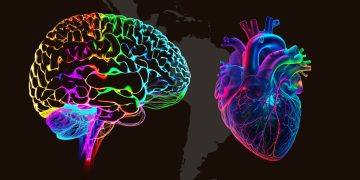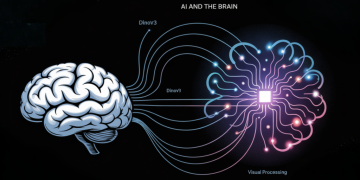In an era dominated by technology, urban sprawl, and 24/7 connectivity, many of us find ourselves overwhelmed, anxious, or disconnected. Modern therapy often involves clinical settings, digital sessions, and pharmaceutical aids. But what if the most effective therapist we could ever have is something as simple—and profound—as nature itself? This article explores the compelling evidence, psychological insights, and practical benefits of turning to the natural world for mental healing. We’ll unpack why nature remains an underused yet deeply accessible therapist.
The Silent Healer: Why Nature Works
Nature’s therapeutic power is far from anecdotal. Research in psychology, neuroscience, and environmental science consistently shows that exposure to natural environments reduces stress, enhances mood, and improves cognitive function.
Stress Reduction and the Parasympathetic Effect
When we step outside into a forest, park, or even a garden, our bodies respond in surprisingly positive ways. Studies measuring heart rate variability, cortisol levels, and blood pressure consistently find reductions after nature exposure. This is largely due to activation of the parasympathetic nervous system—the body’s “rest and digest” mode. Unlike the stress-triggered sympathetic response, this system calms us, lowers anxiety, and fosters relaxation.
A seminal study by Roger Ulrich (1984) demonstrated that hospital patients with views of nature recovered faster than those facing brick walls. This was one of the first scientific clues that nature heals in ways conventional medicine overlooked.
Cognitive Benefits: Nature and the Brain
Nature not only soothes but sharpens the mind. Attention Restoration Theory (ART), proposed by Kaplan & Kaplan, suggests that natural environments help restore our capacity for focused attention. Modern urban life bombards us with distractions, leading to mental fatigue and reduced productivity. Nature offers a soft fascination—a gentle engagement with stimuli like rustling leaves, flowing water, or birdsong—that allows the brain to recharge.
Neuroscientific imaging confirms that nature exposure activates the prefrontal cortex, responsible for executive function, creativity, and emotional regulation. This might explain why a walk in the woods often clears mental clutter better than a cup of coffee.

Emotional Resilience and Nature Connectedness
Humans evolved for millennia in close contact with nature. Our psychological well-being is tightly linked to this connection. The biophilia hypothesis, introduced by E.O. Wilson, posits an innate human affinity for the natural world. Disconnection from nature, common in urban settings, correlates with higher rates of depression and anxiety.
Studies show that people who regularly engage with natural environments report greater emotional resilience. This means they bounce back from setbacks quicker, experience less emotional volatility, and cultivate a more positive outlook.
Why We Don’t Use Nature as Therapy Enough
Despite mounting evidence, nature remains an underutilized resource in mental health treatment. Several reasons explain this paradox:
1. Urbanization and Accessibility
More than half the world’s population now lives in cities, where green space can be limited. Busy schedules and urban infrastructure often prevent easy access to natural settings. Parks exist, but many are crowded or small, diluting their therapeutic potential.
2. Modern Lifestyle and Screen Time
Digital devices dominate our attention. People spend hours indoors, fixated on screens. This “nature deficit disorder,” coined by Richard Louv, describes the psychological costs of reduced outdoor time. Screens often compete with and replace natural experiences, creating a feedback loop of disconnection.
3. Lack of Awareness and Integration
Therapy and medicine largely remain clinical, lab-coated domains. Although some progressive therapies incorporate nature (ecotherapy, wilderness therapy), mainstream mental health services rarely prescribe “time outside.” Many people simply don’t realize nature’s benefits or underestimate its power.
Nature-Based Therapeutic Modalities
While informal exposure to nature is beneficial, structured nature-based therapies have emerged as effective adjuncts or alternatives to traditional treatment.
Ecotherapy
Ecotherapy encompasses a range of interventions involving nature contact to improve mental health. Activities include guided nature walks, gardening, conservation projects, and outdoor mindfulness exercises. Evidence shows ecotherapy can reduce symptoms of depression, PTSD, and anxiety disorders.
Wilderness Therapy
Used mainly with adolescents and young adults, wilderness therapy combines outdoor adventure, group therapy, and experiential learning. Participants engage in hiking, camping, and survival skills while processing emotional challenges. Research highlights its success in improving self-esteem, reducing substance abuse, and fostering social skills.
Forest Bathing (Shinrin-Yoku)
Originating in Japan, forest bathing involves immersive, mindful time in wooded environments. Practitioners slow down, breathe deeply, and engage senses fully. Numerous studies from Japan and beyond document its effectiveness in lowering blood pressure, enhancing immune function, and boosting mood.
Practical Ways to Use Nature as Your Therapist
You don’t need a formal program to tap into nature’s healing potential. Here are simple strategies to incorporate nature therapy into your routine:
1. Daily Dose of Green

Aim to spend at least 20 minutes a day in a natural setting—whether a park, garden, or tree-lined street. Even a small balcony garden counts.
2. Mindful Nature Walks
Walk slowly, breathe deeply, and observe the details around you—colors, smells, textures. This mindful immersion engages your parasympathetic nervous system and restores attention.
3. Gardening and Plant Care
Tending plants fosters a nurturing relationship and offers a tangible connection to life cycles. Gardening reduces rumination and promotes purpose.
4. Digital Detox Outdoors
Set aside device-free outdoor time to reconnect with natural sounds and sights. Unplugging amplifies restorative benefits.
5. Outdoor Exercise
Combine physical activity and nature exposure through hiking, cycling, or yoga in green spaces. The dual benefits amplify mental health gains.
Future Perspectives: Integrating Nature Therapy Into Healthcare
The potential for nature-based therapy to revolutionize mental health care is immense. As healthcare systems grapple with rising mental illness rates and high costs, nature offers a low-cost, accessible solution with minimal side effects.
Urban Planning for Mental Health
Cities worldwide are beginning to incorporate “green prescriptions,” public parks, green roofs, and community gardens into health promotion strategies. Integrating nature into urban design creates healthier, happier populations.
Clinical Recognition and Training
Medical professionals increasingly recognize nature therapy’s role. Training programs for therapists now include ecotherapy modules. Insurance coverage for nature-based programs may expand, increasing accessibility.
Technology and Nature Synergy
Paradoxically, technology can also enhance nature therapy—through apps that guide mindfulness in natural settings, virtual reality nature experiences for immobile patients, or wearable biofeedback devices monitoring relaxation outdoors.
Conclusion: The Therapist That’s Always There
Nature is, quite literally, the oldest and most accessible therapist on the planet. Its powers to calm, restore, and uplift are scientifically proven yet vastly underused. Reclaiming time in nature isn’t a luxury—it’s an essential act of self-care in a disconnected world.
The next time stress mounts or your mind feels cluttered, consider stepping outside. Listen to the trees, breathe the fresh air, and let nature’s gentle therapy guide you back to balance.



















































Discussion about this post